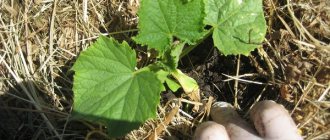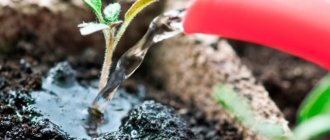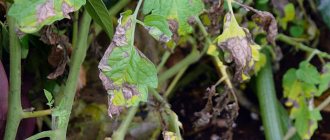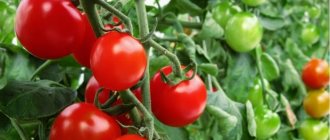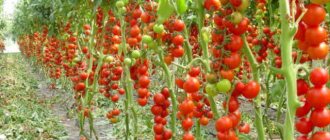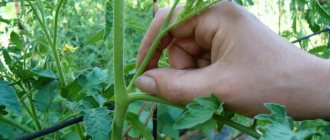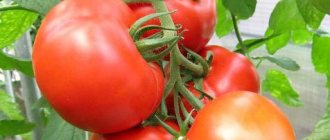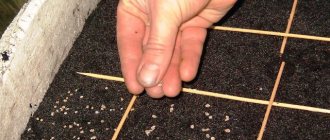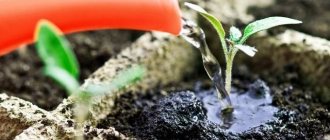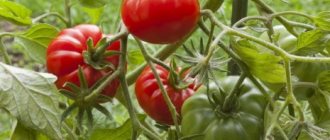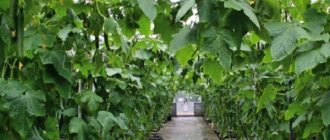What is mulch for?
Mulching is the protection of the earth from external influences using special materials (mulch) applied to the soil around plants. The functions of mulch are not limited to this. Therefore, it is important to know what mulch is and what other tasks it can perform.
The soil around plants is exposed to the aggressive action of wind and sun. Most irrigation water simply evaporates without reaching the plant's roots and providing nutrition. By covering the surface of the soil with special materials, you can maintain moisture, and when mixing with soil, make it light and allow air to easily penetrate to the roots.
If in summer mulch protects from the hot sun, then in winter it protects the roots from freezing when there is insufficient snow.
The material from which mulch is made can be synthetic or made from organic residues. Useful organic matter will also become fertilizer for the plant. Mulching has been used for a long time, finding a lot of useful properties in agricultural practices and receiving gratitude from plants in the form of a good harvest.
What materials are not suitable
To avoid plant diseases, delays in development and even their death, vegetable growers should know what is not recommended for mulching tomatoes:
- Newspapers. Printing ink contains lead, which accumulates in the soil when such mulch is used.
- Wood shavings, pine sawdust and bark. By rotting, these materials increase acidity and also take nitrogen from the top layer of soil.
- Freshly cut plants and grass. On cool nights, such shelter can cause the tomatoes to become hypothermic. And also, on the contrary, if the weather is too hot, the root can be prohibited under fresh mulch.
- Organic remains of nightshade plants (potato tops, mown pepper and tomato bushes).
- Transparent greenhouse film. It does not protect against the growth of weeds and can easily be blocked by the root system of tomatoes.
- Crushed stone, screenings, gravel.
Benefits of mulching tomatoes
Tomatoes will grow and ripen without mulch treatment, but its use will ensure a better harvest and protect against many diseases. Tomatoes in many regions are planted or grown entirely in greenhouses, making mulching particularly important. What does the use of this type of agricultural technology give to tomatoes:
- moisture retention for plant nutrition;
- accelerated fruit ripening and increased yield;
- increased content of soil microorganisms that live and reproduce in the warm and moist layer of the earth;
- preventing the formation of a hard crust that does not provide oxygen to the root system;
- retardation of weed growth;
- protection from insects;
- when connected to the soil - its cultivation, relief and fertilization;
- eliminating the need for frequent loosening;
- reducing the number of waterings, due to which the roots are less exposed and better protected.
Mulching solves another problem - strong evaporation from bare soil contributes to excessive moisture in the fruits and their infection with fungal diseases.
In addition, heavy fruits often lower the bushes to the ground, and the tomatoes ripen on wet ground, which does not improve their quality and appearance. Greenhouse cultivation creates the preconditions for accelerated evaporation of moisture, so mulching tomatoes in a closed space is especially important.
Mistakes and disadvantages of mulching
Having a pronounced effect on the life of the plant, mulch in some cases can have a negative effect. The disadvantages of the method include:
- The laid layer of organic matter, especially if it is too large, can rot.
- On heavy soils, with excess moisture, the earth clod does not dry out - the roots can deteriorate.
- Organic matter attracts mice and moles, which spoil the plantings. Slugs can breed in the material, and earthworms attract birds that spoil the fruit.
The condition of the mulch layer must be carefully monitored to prevent rotting.
And now more about the benefits and harms of mulching with mowed grass.
Of course, tomatoes will grow without covering the soil surface with mulch, the only question is how high their productivity will be. If you want the effort you put into growing tomatoes to pay off, it's worth putting in a little more work. Moreover, mulching will make your work much easier in the future.
Mulching the soil is not only beneficial for the plants themselves, but also makes it easier for you to care for them.
Let's list the most important benefits of mulching:
- the soil under the mulch retains its structure, remains loose and crumbly, saturated with beneficial microorganisms;
- the watering procedure is simplified, since the stream of water does not erode the top layer of soil;
- after watering, a crust does not form on the surface of the soil and cracks do not appear, so there is always air access to the roots of the plants;
- mulch does not allow moisture to quickly evaporate from the soil;
- under the mulch unfavorable conditions are created for the proliferation of weeds;
- Mulching accelerates fruit ripening and increases yield.
Another argument in favor of the event. This nightshade plant is very afraid of high humidity and easily picks up fungal diseases from the soil. A layer of mulch separates the sprout from the moist soil, and it remains healthy throughout the growing season.
So, mulching simplifies plant care, significantly reduces the amount of watering and eliminates the need to cultivate the soil around tomatoes. After just a year of regular mulching, the soil in the greenhouse becomes richer in microelements and much more fertile.
I don’t remember where I read it, but I really liked the phrase that the task of every gardener is to increase, and not deplete, the fertility of the soil in the process of using it. In a greenhouse this problem is especially acute. And this is how cut grass helps.
- Under the influence of active sunlight, it dries quickly, releasing nitrogen and other useful substances to the soil.
- When drying, the grass releases moisture to the ground without compacting it, which reduces the number of possible waterings.
- A gradual increase in the layer of mulch throughout the season replaces many types of fertilizing, since each new layer of mowed greenery feeds the roots of tomatoes with useful substances.
- Bacillus hay begins to actively multiply in decomposing grass, which is destructive to many types of pathogenic fungi and bacteria, including late blight.
- Protects the soil from night cold snaps, keeping the temperature at the same level. The fact is that when decomposing, greens release heat. Therefore, when night temperatures drop, it is advisable to increase the mulch layer.
- As strange as it may sound, many gardeners leave reviews that when mulching with mowed grass, some pests disappear from the greenhouse. Such as whitefly or spider mites.
There are many advantages to mulching with cut grass, but there are no disadvantages. If you are worried that the greens may rot in the greenhouse, then I will reassure you. For peppers, cucumbers and eggplants, I deliberately leave the grass from the lawn mower to decompose, and then mulch with this hot grass. There will be no harm, only benefit.
I think you will find my experience of mulching grass clippings in a greenhouse useful. Over many years of use, I have not noticed a single drawback. Although, the debate on the topic: the benefits and harm (there is no harm, I remind you) of mulching with vegetation does not subside.
Types and properties of material
The use of natural and synthetic materials as mulch has its own characteristics and rules of application. Which product is best used to protect tomatoes is decided based on the capabilities and availability of organic matter.
Some people find unexpected options to mulch their beds - husks of seeds, grain crops, moss.
Organic
Organics have undeniable advantages when mulching, as they solve all the tasks. Having fulfilled its protective functions, it fertilizes and improves soil quality when digging. When choosing material for filling beds, you need to take into account the composition of the soil and remember that in the future the mulch will become fertilizer.
See also
When is the best time to plant tomatoes for seedlings in 2021 and timing of sowing seeds
Read
With its help you can change acidity, improve the content of microelements and bacteria.
Inorganic
Inorganic materials cannot fertilize the soil, so mulch does not perform this important function. For tomatoes, an opaque film is used, which retains moisture but does not allow weeds to germinate. You can use colored materials that, with good care, last for many years.
Open and closed ground - features of mulching
The approaches to mulching tomatoes in open and protected ground are somewhat different.
For closed ground in a greenhouse
The eternal problem of closed ground is room ventilation and stagnation of damp air. Black film significantly reduces air humidity because it prevents the evaporation of water from the soil.
It turns out that black film not only saves water, but also prevents fungal diseases. Before laying the film, the bed should be fed with complex fertilizers or sprinkled with compost. It is advisable to organize drip irrigation - greenhouse conditions are more suitable for this than open ground.
Mulching a protected soil bed has a dual function. Greenhouse vegetables are cultivated using intensive technology. The growing season of tomatoes growing in a greenhouse is almost 2 times longer than in the ground. It is not surprising that they require 2 times more nutrition for full fruiting. Therefore, for greenhouse conditions, it is imperative to choose mulching material:
- which either itself quickly decomposes into nutritional components;
- which allows artificial feeding to be carried out in the most convenient way.
Compost and mature humus are the best options for greenhouse tomato crops. It is advisable to apply a layer of at least 5 cm. In the absence of organic matter, use almost any light-proof material.
In the video, the author talks about how he mulches tomato bushes when it is necessary to trim the leaves.
Features of mulching ground tomatoes
In an open-air tomato bed, the growth conditions are far from greenhouse conditions.
They are more susceptible to wind erosion: a combination of water, wind and sunlight turns the topsoil into rocky soil. Plants perceive even a lack of water not as painfully as the appearance of a dense crust that disrupts air exchange processes.
The mulching material must meet these conditions. The same black polyethylene can only be used in combination with a heat-insulating layer of straw or sawdust.
Preference should be given to organic materials - compost, leaves, chopped straw, etc.
The second most important criterion is light resistance. The mulch layer should be at least 5 cm, then weeds will not be able to break through to the light.
What can be used as mulch
You can mulch tomato beds with different materials, adjusting the amount depending on the characteristics of the soil, improving their composition due to the components contained in the mulch. This applies to different types of organic matter. Synthetic materials are convenient and practical, although they are not free from disadvantages.
Film
Inorganic material, easy to use, cheap and reliable. It will not become fertilizer, so it can be reused. If the summer is warm and sunny, it is better to use light-colored films so as not to overheat the roots.
One of the disadvantages of this mulch is the damping out of the roots without ventilation and air refreshment.
Non-woven material
Non-woven fabric is similar to film in its methods of use, but is free from its disadvantages. It is moderately permeable to air and light, protects against cold and overheating, and ensures a comfortable existence of the root system. With proper use and storage it will last up to 5 years. The main disadvantage is the high cost, which makes convenient material inaccessible to many gardeners.
Paper and cardboard
An important and affordable type of synthetic mulch is cardboard. For tomato beds, unpainted types of material are used, having previously crushed it. Paper and cardboard, colored or with text, are not used.
Before backfilling, the paper is soaked in liquid fertilizer to provide nutrition to the tomatoes.
Most gardeners value cardboard for its availability and cheapness, but it spoils the appearance of the beds; the mulch must be turned regularly and removed in the fall. Sometimes it rots and becomes moldy, and slugs grow in the mass.
Mulch from pine needles, spruce sawdust
Coniferous materials are rarely used for tomatoes, as they contain a high content of essential and acidifying components that have a negative effect on plant growth.
Tree bark sawdust
To prevent soil oxidation, the material is pre-alkalinized, which improves the quality of the fertilizer. Ideally, the sawdust is allowed to age for a year or two before being used as mulch. To preserve nitrogen, sawdust is impregnated with urea and laid out in a layer of 8-10 centimeters. This type of mulch is rarely used for tomatoes; it is used mainly for winter insulation.
Compost
One of the best materials for improving soil composition and protecting soil from negative impacts. Lay in a layer of 6-8 centimeters. Compost contains a lot of nutrients, which is good for tomatoes, but often triggers increased growth of the green part of the bush. The reaction is neutral, which makes compost suitable for any soil.
When the compost is immature, it contains many parasites and plant seeds, which impairs the quality of the fertilizer. Often used together with sawdust or chopped grass.
Straw mulch
Hay and straw give tomato beds a well-groomed appearance and cope well with all mulching tasks. They are used for open ground and for greenhouse cultivation, in a layer of no more than 7-8 centimeters. Straw is sold in briquettes and is affordable for most people.
The main problem is the love of rodents for the material, which breed in the hay and harm the crop.
Important: when using straw for mulching, measures are taken to protect against mice and rats.
From old strawberry leaves
Many gardeners, in the absence of other materials, use cut leaves of garden strawberries. Note that healthy leaves are suitable, without signs of diseases or pests. This material is used in July, after pruning the berry bushes, removing the roots so that the strawberries do not germinate.
Earth
Earthen mulch is formed naturally after loosening - these are medium-sized pieces of earth broken with a hoe. It survives only until rain or watering, turning into a hard crust after contact with water. The most labor-intensive method of mulching with a short duration.
Sackcloth
Covering tomato beds with burlap protects the soil for a short period of time, as the fabric quickly allows moisture to escape, but still protects the soil. If there is a large amount of burlap and a lack of other means, you can protect tomatoes from negative effects in this way.
See also
What to do with black leg in tomato seedlings, control measures and treatment
Read
Cut grass
The grass is well suited for mulching tomato beds, but requires special preparation. It is dried before applying to tomatoes. The grass is mowed before flowering; using it with seeds will infect the beds with weeds. The ideal option is lawn grass. Contains nitrogen, which must be taken into account when applying.
Moss
Covering the beds with moss is used by summer residents who have plenty of this material. Some people go to the swamps to collect dry sphagnum for tomato and other beds. In the absence of other means, cover with moss.
Inorganic species
Reviews from gardeners point out both advantages and disadvantages of inorganic materials for mulching vegetable crops.
Film
Among the advantages of covering beds with plastic film, one should note its affordability and ease of use. The service life for such covering material is at least a year. It is an excellent solution when an automated drip irrigation system is installed.
For the southern regions you need to use light shades of film, and to obtain early harvests in the northern regions - dark shades.
Among the disadvantages of choosing a film, one should mention poor ventilation, which leads to decay of the roots of the vegetable crop and causes the formation of fungi and bacteria.
Lay film material on the beds with planted vegetables after preliminary preparation, when organic bait is placed in the holes. The edges of the film laid on top of the ground are fixed with a weight. Cross-shaped cuts are made in the film, and tomato bushes are planted in them.
Nonwoven materials
Non-woven covering fabric helps protect tomatoes from frost by insulating the roots. It is an expensive type of mulch for tomatoes, but its effectiveness lasts up to five gardening seasons. Black material should be laid on top of the soil, and transparent material is intended for covering the bushes directly. Possessing good light transmission due to porosity, the material perfectly allows moisture and air to pass through and protects from sunlight.
Paper and cardboard materials
Available unpainted paper and cardboard, which have good efficiency, unfortunately quickly become wet and become unusable, and if there is excessive moisture, they become moldy and serve as a breeding ground for slugs.
Newspaper is not suitable for mulching tomatoes, since the lead present in the printed rift is a harmful carcinogen for plants.
When using paper and cardboard, do not forget to regularly turn the material over and turn it. At the end of the gardening season, the cardboard is put into compost pits. For paper and cardboard flooring, the materials are pre-shredded.
What is prohibited from mulching a tomato bed?
Not all materials are suitable as mulch. In order not to harm tomatoes, adhere to the following rules:
- foliage and tops must be healthy - free from diseases and pests;
- grass – without seeds, young;
- paper – without ink or printing;
- use of roofing felt - only crumb side up, it is better not to use it at all;
- Do not use fresh manure and clean peat.
When using film, you can cause rotting of the roots; in extreme heat it is better not to use it.
When should the procedure be carried out?
The timing of laying mulch follows the general rule for greenhouses and outdoors - the ground should be warm, but not overheated.
In the greenhouse
In a well-heated greenhouse, tomatoes are mulched immediately after planting. This immediately protects the seedlings from all types of negative influences. If the earth has not really warmed up, wait for the deep layers to completely thaw and warm up to 15°. Covering the soil with mulch prematurely will shade the surface from the sun and act as an insulator against heat, keeping the cold in the ground.
In the open ground
When planting in open ground, mulching is performed after the soil has completely warmed up (15 ° at a depth of 20-30 centimeters). You cannot delay laying out the mulch - the earth will overheat, the material will retain excess heat, and the roots will be damaged. It is also harmful to mulch cold soil, isolating it from the warm sun.
Recommended coatings
Experienced gardeners recommend mulching tomatoes in a greenhouse and open ground using the following materials:
- Straw, weeds, grass clippings.
The use of these types of mulch gives the best results, especially if you use green fertilizers - green manure - for mulching. They do not cake into a dense, stone layer, allowing the earth to breathe, allowing air and moisture to pass through. By rotting, they improve the structure of the soil and saturate it with useful substances. But it is worth noting that to effectively protect the beds, the layer must be at least 10-15 cm thick. It is important to regularly monitor this, adding new organic matter as it rots.
With a thin protective layer, weeds will easily grow through the organic barrier. It is also necessary not to forget that under the layer of mulch, in addition to beneficial insects, soil pests also like to live, in particular the larva of the cockchafer. It is imperative to use plants that have not reached the seed formation stage. Otherwise, instead of providing protection, such cover of the beds will promote the active growth of young weeds.
- Needles.
Pine needles are used only if they are already well dried. Green needles are not suitable. For mulching, it is better to take the top layer of pine litter - the bottom layer contains many seeds of weeds and other plants. Plus, such mulch affects the acidity of the soil.
The advantage of pine needles is that it allows water and air to pass through, and also reflects the sun's rays. But when using this material, the layer must be at least 10 cm, otherwise you need to constantly monitor the plantings, weeding out growing weeds and adding new needles.
- Inorganic mulch.
The best materials for mulching tomatoes are agrofibre and agrofabric. The disadvantage of agrofabric, despite all its advantages, is its high price. When using agrofibre for mulching, weed growth is prevented. Moisture passes through it, so you can water over such material.
Under the agrofibre, comfortable conditions are created for the life of beneficial microorganisms. And the most correct option, especially for the south, is to use white and black material. You need to use dark, non-perforated film carefully; such shelter in extreme heat will only cause harm.
Technology and rules for mulching in the greenhouse and garden
When mulching, adhere to the following rules:
- Before processing, the soil is freed from weeds.
- They are loosened well, sprinkled with long-term fertilizers - ash, dolomite flour.
- Films and fabrics for mulching are laid out and strengthened on the beds, making slits for planting seedlings.
- Organic mulch is prepared depending on the type, enriched with the necessary elements.
- Spread in a layer up to 10-15 centimeters, later the mulch is compressed to 7-8. Do not cover the tomato stem with material; leave a small gap for watering.
- The general rule is to apply a thinner layer of mulch on heavy clay soils.
- The surface must be renewed as it deteriorates and weathers.
- Water the tomatoes less frequently and more abundantly, so that the water reaches the ground and not just wets the mulch.
The surface of the beds is renewed after some time to compensate for losses and improve appearance.
